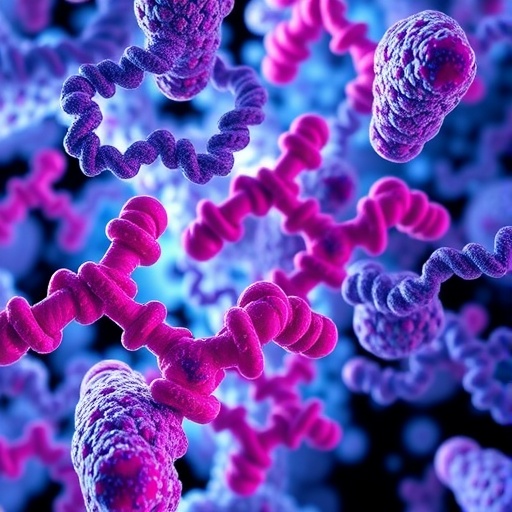In recent years, the biological phenomenon known as microchimerism has begun to garner increasing attention from both the scientific community and the general public. This term refers to the presence of a small number of cells within an individual that originated from another genetically distinct individual. It most commonly occurs during pregnancy when maternal cells cross the placenta to inhabit the fetus, creating a symbiotic relationship between mother and child. However, the implications of microchimerism extend far beyond this initial interaction; they reach into the realms of sex and gender identity, leading to a reevaluation of the traditional binaries that have long governed our understanding of human biology and identity.
The exploration of microchimerism reveals fascinating complications regarding sexual differentiation and reproductive biology. Traditionally, science has operated under a strict binary system of sex, defining individuals as either male or female based solely on their chromosomal and anatomical characteristics. This reductive framework, however, is increasingly challenged by findings regarding microchimerism. These discoveries suggest that the biological reality of human beings may not align neatly with these categories, prompting researchers to consider a broader spectrum of identities informed by complex biological processes.
At its core, microchimerism showcases how the interactions occurring at the molecular level can shape experiences of gender and sex. For instance, male cells can be found in female bodies and vice versa, leading us to question how many of our assumptions about identity are informed by the presence of foreign, yet integrated cellular populations. Investigating how these cells influence behaviors, health outcomes, and even psychological states opens an avenue for understanding gender that is adaptable and fluid rather than fixed and binary.
One of the most profound implications of microchimerism relates to our understanding of maternal-fetal connection and its lasting impact on identity formation. The transferring of cells during gestation can fundamentally alter the immune systems of both mothers and their children, fostering an interdependent biological relationship. Such insights lead to questioning how the maternal experience and the lived realities of women may differ radically based on the unique cellular makeup they carry throughout their lives. This intersectionality of biology and identity challenges us to rethink not only how we classify gender but also how we approach gender-related health concerns.
Furthermore, microchimerism prompts ethical considerations in medical research and treatment. In the context of autoimmune diseases, for example, the presence of foreign cells can complicate diagnoses and influence treatment strategies. It suggests that a patient’s biography, complete with the influence of microchimeric cells, may need to be taken into account when considering personalized medicine. This shift towards integrating individual histories into health paradigms signifies a move toward a more nuanced understanding of human biology and its variations.
The rewriting of sex and gender binaries in light of microchimerism also resonates with broader sociocultural dynamics. Social constructs surrounding masculinity, femininity, and sexual orientation have historically constrained many individuals, leading to distress and dissonance when their lived experiences do not fit the binary mold. Recognizing that biological identity may itself be a spectrum invites society to expand its understanding and acceptance of diverse identities. This can foster an inclusive atmosphere, where variations in human experience are not merely tolerated but celebrated, aligning with contemporary movements advocating for gender inclusivity.
Across the spectrum of biological sciences, the study of microchimerism serves as a catalyst for interdisciplinary collaborations. By integrating insights from genetics, psychology, sociology, and even philosophy, researchers can forge a more comprehensive understanding of what it means to inhabit a body. This interdisciplinary dialogue not only enriches scientific inquiry but also encourages a broader societal discourse about the implications of biological knowledge on our understanding of identity.
Meanwhile, the discussions surrounding microchimerism reopen debates on the relevance and utility of traditional sex categorizations in medical contexts. For example, how do we navigate the landscape of clinical trials if microchimerism means that individuals do not fit neatly into predefined study categories? As more studies emerge linking microchimerism to diseases that disproportionately affect women or men, the medical establishment will need to recompute its approach to sex-specific healthcare, ensuring that all patients are considered within the spectrum of biological identity.
Additionally, exploring microchimerism can provide insights into reproductive technologies and their implications. As science continues to advance with techniques such as IVF and genetic editing, understanding the contributions of microchimerism can influence the ethical frameworks guiding these technologies. By considering how genetic material can intertwine and persist in diverse ways, we can shape innovations that prioritize both health and autonomy across the spectrum of gender identities.
As scholars like Shildrick continue to expand on these explorations, the conversation around microchimerism engenders excitement while anchoring itself in scientific rigor. The reframing of sex and gender through the lens of microchimerism has profound implications for both individual identities and societal norms. It challenges us to embrace a more nuanced understanding of human biology, which is as intricate and varied as the individuals it encompasses. The topic not only ignites scientific inquiry but also invigorates discussions about identity, equity, and acceptance in contemporary society.
In this ongoing dialogue, the future of research on microchimerism holds promise for unraveling a complexity that reflects the intersection of biology and identity. By adopting a framework that recognizes the fluid dynamics of human experience, we open doors to future studies that could reshape the medical and sociocultural landscapes alike. With each step taken into this uncharted territory, we inch closer to a comprehensive understanding of what it means to be human, defying the limits traditionally imposed by binary classifications and paving a path toward greater inclusivity and acceptance.
As we consider the implications of microchimerism, society stands at a crossroads, grappling with the inevitable question: What does it truly mean to understand ourselves? The opportunity lies in embracing complexity, reimagining sex and gender, and nurturing a society that recognizes every individual as unique, shaped not just by their biological inheritance but also by a rich tapestry of experiences that defines humanity itself. In this light, the study of microchimerism emerges not just as a biological curiosity, but as a gateway into understanding the full breadth of human identity in all its multifaceted glory.
Subject of Research: Microchimerism and its implications for understanding sex and gender binaries
Article Title: Microchimerism and the need to rethink sex and gender binaries
Article References:
Shildrick, M. Microchimerism and the need to rethink sex and gender binaries.
Biol Sex Differ 16, 98 (2025). https://doi.org/10.1186/s13293-025-00782-9
Image Credits: AI Generated
DOI: https://doi.org/10.1186/s13293-025-00782-9
Keywords: Microchimerism, gender identity, sex binaries, maternal-fetal connection, biological complexity, inclusive healthcare, gender diversity
Tags: beyond binary gender definitionsbiological complexities of sex differentiationchallenging traditional sex categoriesevolutionary perspectives on microchimerismimplications for reproductive health studiesimplications of microchimerism in biologymaternal cells in fetal developmentmaternal-fetal relationshipsmicrocellular level influence identitymicrochimerism and identity formationrethinking gender identitysymbiotic relationships in biology






